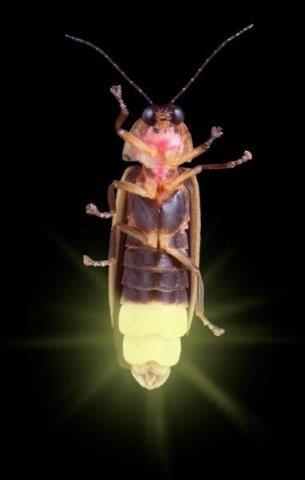FOR IMMEDIATE RELEASE
ACS News Service Weekly PressPac: July 17, 2013
Discovery of the missing link in evolution of bioluminescence
With bioluminescence — the process that makes fireflies glow — now a mainstay in medical research, scientists are reporting discovery of a “missing link” of its evolution, which represents one of the deepest mysteries about bioluminescence. It paves the way toward development of new enzymes that glow in different colors and are 10, 100 or 1,000 times brighter, they say in ACS’ journal Biochemistry.
V.R. Viviani and colleagues focus on luciferases, enzymes critical in producing the bioluminescent effect in fireflies, jellyfish and other creatures. Scientists have known that bioluminescence originated 400 million years ago in jellyfish, and more recently in fireflies and other beetles. But how? That has been a mystery, the source of controversy and the key to developing more versatile bioluminescent enzymes for medicine and biology.
The scientists describe discovery of a “luciferase-like” enzyme in mealworm larvae that represents a missing link between the non-luminescent enzymes of the past and the “bright,” modern-day luciferase enzymes in fireflies. Viviani’s team discovered a structural switch that turns these kinds of “dark” enzymes into luciferases, and then used that information to develop a totally new luciferase that can produce an orange glow — the first case of development of a luciferase from other distantly related enzymes with other metabolic functions.
The work results open up new possibilities in biotechnology with the ability to engineer new luciferases from distantly related metabolic enzymes. It could also help scientists develop brighter luciferases with an array of new colors, they say.


